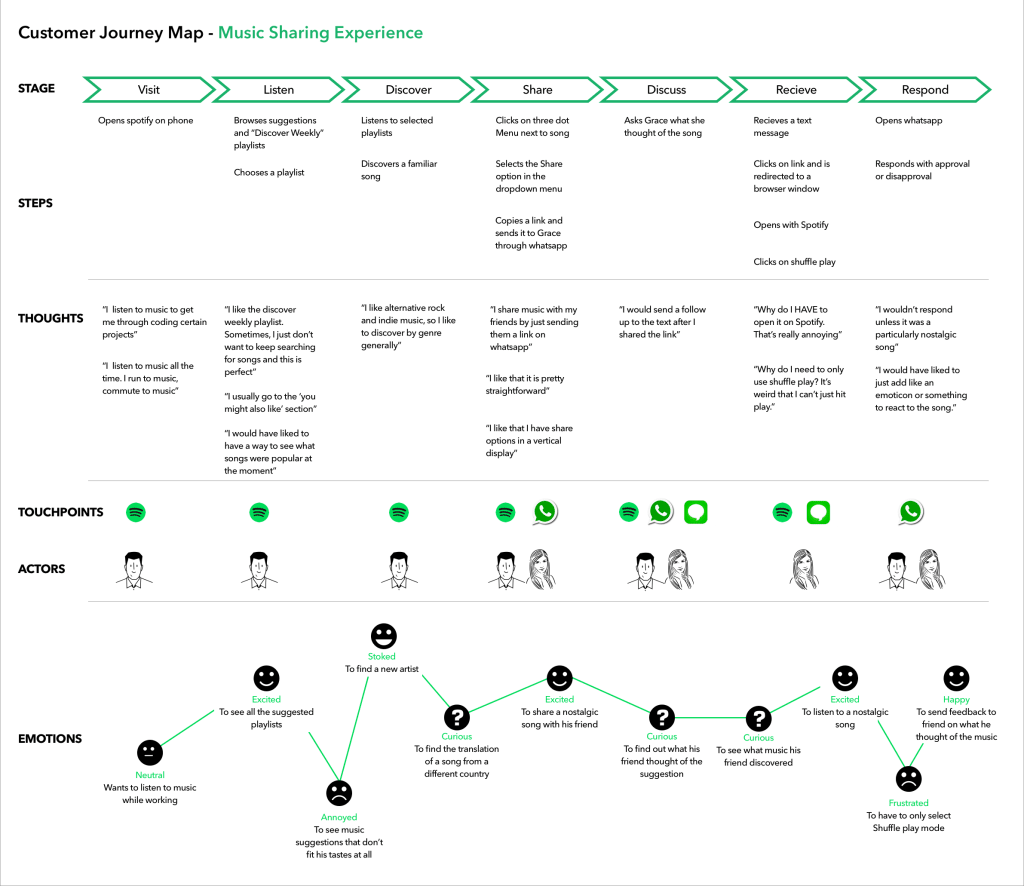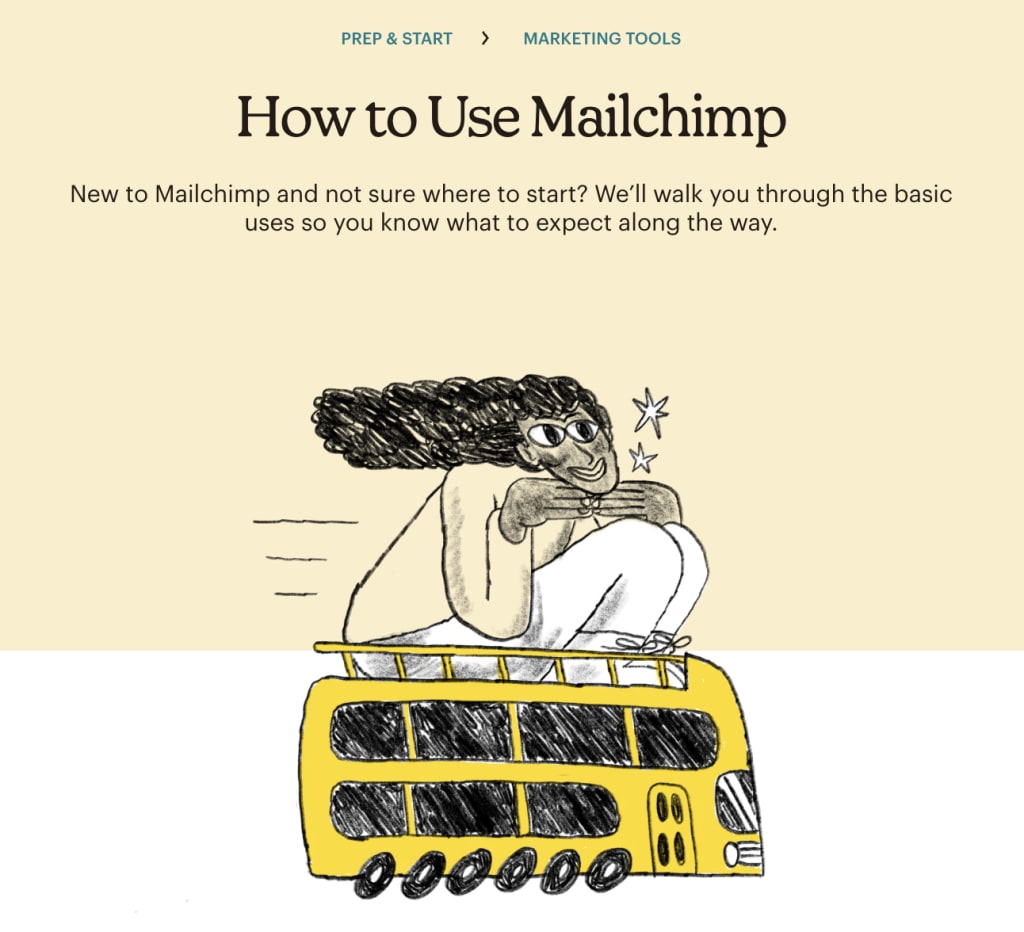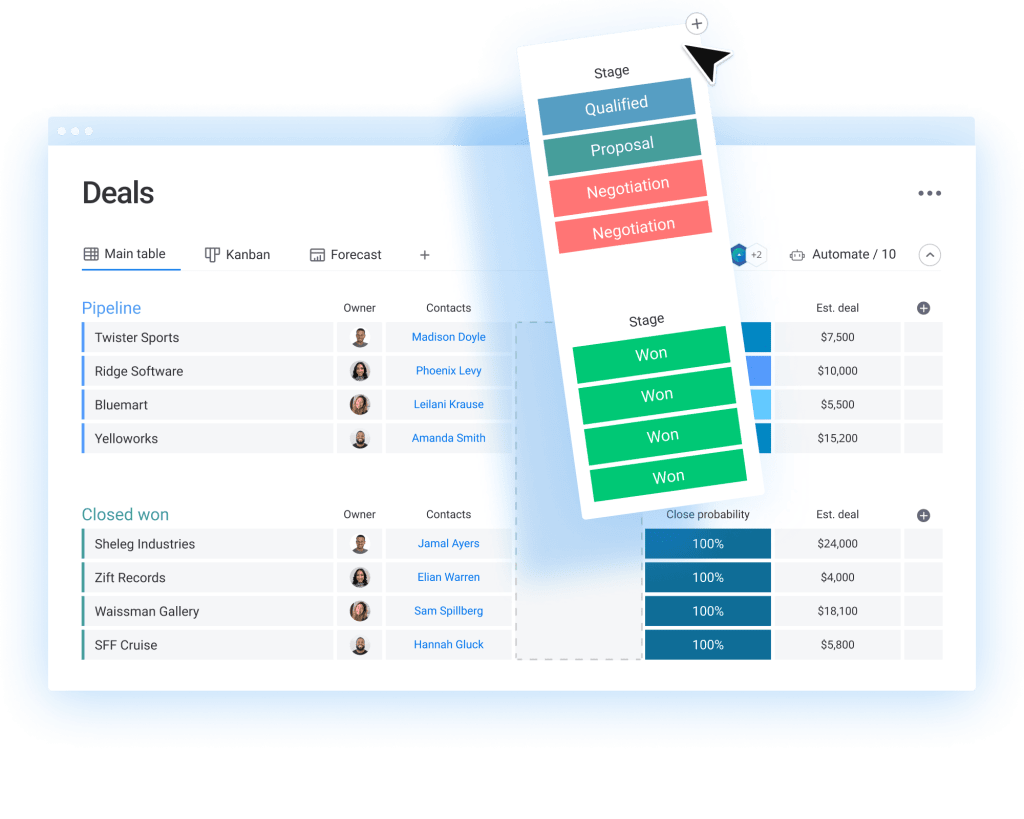Think of a time you bought something you wanted. Whether it was a shirt, the latest phone, or a book. What value did that item have?
“Value” means a lot more than an item’s price tag. A new shirt may have been valuable to you in boosting your self-confidence. A new phone might have value to someone who relies on it for their business, and a new book might teach you a new skill that you can apply to your life or career.
The things we buy have value far beyond their costs, and when it comes to creating that value for customers, businesses have to look at different parts of a sales pipeline to understand where and how value is created.
In this article, we’ll explore what customer value is, how to measure it, and how to create it within your company. We’ll also introduce the monday.com Work OS, and its many features you can leverage to cultivate customer value within your business.
What is customer value?
Customer value is the perceived value of a product or service to a customer, based on the customer’s individual needs, wants, and preferences. A customer’s perception might include factors such as the quality of the product or service, the price, and the customer service experience.
Customer value measures the customer’s perception of the worth of a product or service to them, in contrast to the price they pay for it and compared to alternatives.
How do you measure customer value?
Measuring customer value isn’t always straightforward since each customer’s perceived value is subjective. However, it’s best to follow a specific formula, which looks like this:
Customer value = Benefits – Costs
This formula implies that customer value is equal to the customer’s individual benefits minus the cost incurred. That said, costs aren’t straightforward. When it comes to pricing perceived benefits, they can be weighed as:
- A good customer service experience
- The product or service’s ability to solve a problem
- A product or service’s quality
- A company’s reputation or image
When calculating costs, they can be made up of several different elements, both tangible and intangible, such as:
- Purchase price
- Installation fees
- Maintenance costs
- Time spent researching and buying
- A negative customer experience
When calculating costs and benefits, it’s important to keep in mind that everyone perceives value differently. In this case, it can be helpful to find similarities between buyers or create segmented lists to establish what constitutes “good value” to different types of customers.
Why is measuring customer value important?
Measuring customer value is important because it helps you to identify what is most important to your customers and how you can best meet their needs and expectations. It also allows you to track satisfaction and loyalty, which are key indicators of a successful business and customer relationship management. Finally, measuring customer value helps you to set prices and make decisions about offerings that will maximize customer value and increase your profits.
Research shows that companies who use online resources to understand their customers better grow by 21%, demonstrating the importance of learning more about your customers for the purpose of creating better value.
5 ways to increase customer value
Customers are the lifeblood of any organization, and it’s essential for businesses to understand how to create and maintain value for them. Let’s take a look at different ways businesses can create customer value and facilitate customer obsession.
1. Review your customer experience
Customers should have an easy time navigating your website, finding what they need, and completing their purchases. A good way to assess your customer experience or build a new one is creating a customer journey map to visualize all the steps a customer might make from initial interest to a completed conversion. Spotify’s customer journey map provides a good example of the entire path a customer takes when using its service.

Source: http://www.meghanabowen.design/
2. Segment audience
Segmenting your audience into different groups based on their needs and preferences allows you to better understand each individual customer and tailor offerings to meet specific needs. Audiences can be segmented by age, gender, income, location, lifestyle, or values. By segmenting your audience, you can create buyer personas and targeted campaigns that will create more value for each individual customer.
3. Focus on fostering personalized interactions
Use data to create personalized experiences. This includes sending targeted emails, providing personalized recommendations, and creating tailored offers based on customer preferences. When you track customer data with a centralized CRM like the monday.com sales CRM, it’s easy to locate and track data on specific customers to use in these personalized interactions. Companies should also look for opportunities to go the extra mile to surprise and delight their customers with personalized experiences.

Beauty retailer Sephora does a good job of this by sending out personalized birthday emails in addition to free gifts to both incentivize and delight its customers.
4. Reward customer loyalty
Reward loyal customers by offering additional value, such as discounts for repeat purchases, rewards for referring friends, or a loyalty points program. By showing appreciation for customer loyalty, companies can create more value for their customers and encourage them to keep coming back.

Loyalty doesn’t have to be given away for free, though. Studies show that paid loyalty programs, such as Amazon Prime, generate greater customer value by altering customer behavior even without offering rewards in the traditional sense. According to a survey by McKinsey, 62% of respondents were more likely to purchase from a brand after paying to join its loyalty program since customers find more value in the perks that come with being a member.
5. Focus on customer success
Provide online tutorials, offer free resources, or create a customer support system so that your customers can succeed. Organizations should ensure that their customers have access to the resources they need in order to get the most out of their products and services. By focusing on customer success, companies can create more value and keep customers coming back and retain them.

Mailchimp does this by walking new customers through the process of using its services. The brand created Mailchimp 101 as a resource to teach users how to use its mailing services by offering knowledge-based content that helps set them up for success.
How to use monday.com to create customer value
There’s a lot that goes into building up your company’s customer value, and with all those moving parts, it’s best to turn to a tool like monday.com to organize everything in one place. With monday.com, your team can monitor customer relationships and collaborate to offer customers even more value in a few ways:
- Centralization: As a CRM software, monday.com allows you to stay on top of customer relationships by storing customer data in a singular location, enabling you to build an accurate buyer persona, customer journey map, and offer relevant incentives
- Collaboration: monday.com is a collaborative software that encourages team members from different departments, such as marketing, sales, and customer service, to stay aligned on a customer’s journey. monday.com makes data and customer information accessible to your entire team, so anyone can use, comment on, or share relevant information.
- Automation: Form stronger customer relationships by automating communications and creating triggered workflows so that you’re always sending the right message at the right time.
- Templates: monday.com offers hundreds of different templates to save you time. The market segment template allows you to segment customers and hones in on your target audience so that you can tailor experiences and communication to their preferences

FAQs
What is a customer value proposition?
A customer value proposition is a statement that outlines how a company’s product or service will provide value to a customer.
How does marketing create value for customers?
Marketing provides customers with information to make informed decisions that allow them to identify the right products and services that fit their needs.
How do you calculate customer lifetime value?
Customer lifetime value (CLV) can be calculated by multiplying the average purchase value (APV) by the average customer lifespan (ACL). The formula looks like this:
CLV = APV x ACL
Take your customer value to the next level
While different businesses can employ different strategies to build up customer value, it’s important to employ the right tools to ensure that strategy flows smoothly. monday.com allows teams to work collaboratively on multiple aspects of a customer’s journey, enabling team members to focus on new ways to inject more value into the customer’s experience with your brand.

